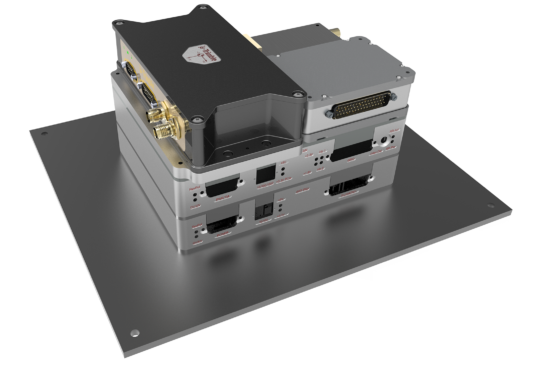Large amounts of data collected by today’s sensitive science instruments present a data-handling challenge to small rocket and balloon mission computing systems.
“Just generally, science payloads are getting larger and more complex,” said astrophysicist Alan Kogut, of NASA’s Goddard Space Flight Center in Greenbelt, Maryland. “You’re always pushing the limit of what can be done, and getting their data back quickly is clearly a high priority for the balloon science community.”
Suborbital science platforms provide low-cost, quick-turnaround test opportunities to study Earth, our solar system, and the universe. Engineers at NASA’s Wallops Flight Facility in Virginia are developing new, higher-capacity systems to process, store, and transmit that data using the IRAD Internal Research and Development Program.

One high-data effort, Kogut said, requires new types of sensors to capture faint patterns within the cosmic microwave background: the oldest light in the cosmos, which was produced 380,000 years after the big bang, when the universe had cooled enough to form the first atoms.
Capturing the polarization — the orientation of this light relative to its path of travel — should show patterns from the original quantum state of the universe, he explained. If seen, these patterns could point the way to a quantum theory of gravity: something beyond Einstein’s general theory of relativity.
“Observing this polarization takes a lot of data,” Kogut said. “The results are limited by noise in any individual detector, so scientists are looking to fly as many as 10,000 detectors on a balloon to minimize that noise.”
While a high-altitude balloon floating high above the clouds is an ideal place for missions to stare into space without disturbances from Earth’s atmosphere, it’s also a good place to be hit by cosmic rays that our atmosphere filters out, he explained. These high-energy particles spatter throughout the balloon payload’s solid structures, producing unwanted signals — noise — in the detectors.
Faster, Lighter, Less Expensive
The CASBa, Comprehensive Avionic System for Balloons, aims to replace a system originally developed in the 1980s, said Sarah Wright, suborbital technology lead at NASA Wallops. CASBa will capture, process, and transmit gigabytes rather than the megabytes capacity of the current system. Building it around commercially supplied computer cores also keeps mission costs down while reducing mass, Wright added.
“That is the essence of sounding rocket and balloon science,” she said. “If it’s relatively inexpensive and off-the-shelf, scientists could put more resources into developing the science package.”
CASBa will provide a variety of options and configurations for different mission needs, she said and will work with the core Flight System operating software developed at NASA Goddard.
Once proven on a balloon flight this summer, a sounding rocket version will be tested in 2025. Additional IRAD projects seek to develop more efficient power-switching electronics and higher-data-rate transmission capabilities which, taken together, complete the computing and download capacity overhaul.
Engineer Ted Daisey leads the IRAD effort to integrate a commercially available computer the size of a credit card into their control module.
“We’re building this around a Raspberry Pi Compute Module 4, which is an industrial product intended for embedded systems,” Daisey said, “so it’s going to be very cost-effective for suborbital projects we do here at Wallops.”
Engineer Scott Hesh is developing the power switching unit to complement the Raspberry Pi CM4 computer. He described it as a modular switch that distributes the system’s power supply between up to eight different hardware systems. It uses programmable software “fuses” to protect components from overheating as well as hardware fuses to protect the power switching unit.
“The avionics package takes a little less space and less mass than a current sounding rocket system,” he said. “But it’s a game changer when it comes to implementing avionics and communication. Each module measures approximately 8 by 6 inches, which is much smaller compared to our current balloon systems.”
“This whole 21st century avionics system was designed based on our Wallops philosophy of fast, agile, and cost-effective solutions for our suborbital platforms,” Hesh added.
NASA’s Goddard Space Flight Center, Greenbelt, Md.
Share
Details
Related Terms
https://www.nasa.gov/technology/goddard-tech/big-science-drives-wallops-suborbital-upgrades/









Leave a Reply